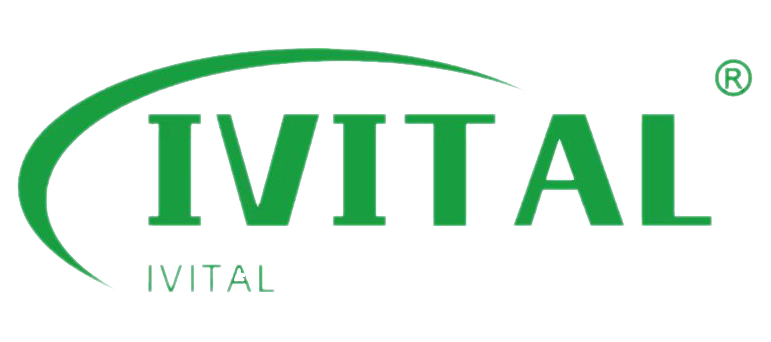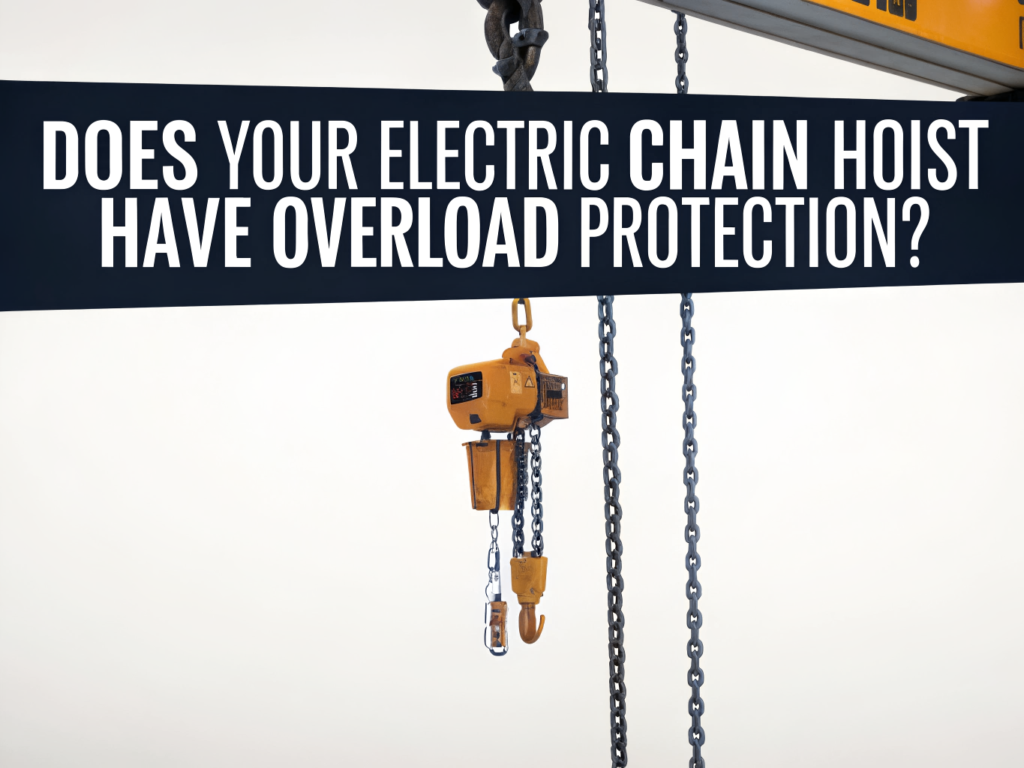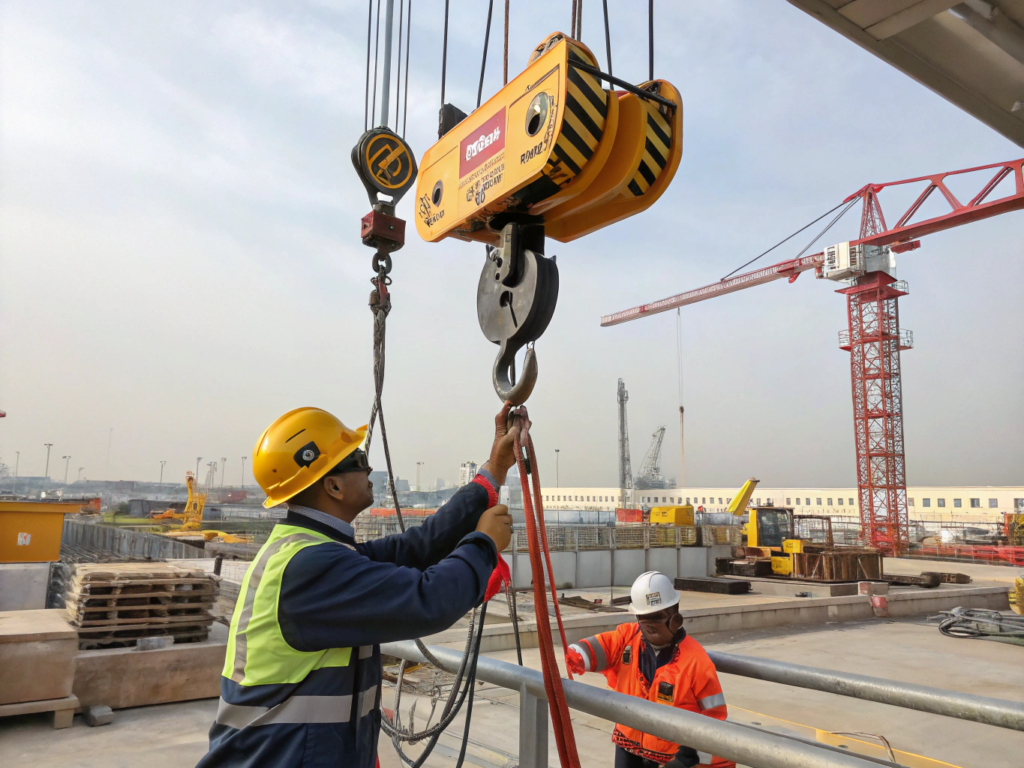
As someone who’s spent years working in manufacturing and construction, I’ve seen firsthand how dangerous it can be when equipment isn’t properly protected. Overloading a hoist can lead to expensive damage or even accidents. That’s why ensuring your hoist has overload protection is essential for safe and efficient lifting operations.
Electric chain hoists with overload protection automatically stop lifting when the load exceeds safe limits. This helps prevent accidents and prolongs the hoist’s lifespan.
I’ve had my fair share of close calls where equipment was pushed beyond its limits, and it didn’t end well. In this post, I’ll explain how overload protection works and why it’s so important for your safety and equipment longevity.
- What Is Overload Protection on a Chain Hoist?
- What Is the Overload Limit for Electric Chain Hoists?
- What Devices Prevent Overloading in Hoists?
- What Are the Hazards of Using an Electric Hoist Without Overload Protection?
- How Do Overload Protection Devices Improve Safety in Lifting Operations?
- Conclusion
What Is Overload Protection on a Chain Hoist?
When working with electric chain hoists, understanding overload protection is crucial. It’s the feature that ensures you don’t push the hoist beyond its rated capacity, which can lead to serious mechanical issues.
Overload protection on a chain hoist ensures the load doesn’t exceed its maximum capacity, preventing chain slippage and extending the hoist’s lifespan.
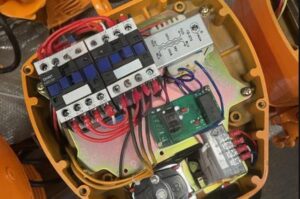
How Does Overload Protection Work?
Overload protection works by automatically stopping the hoist once it detects that the load is too heavy. This could be due to either a slip clutch mechanism or a thermal relay that monitors the motor’s temperature. In my experience, this protection system has saved many hoists from damage during high-stress operations.
Why Does It Matter?
If a hoist doesn’t have overload protection, you risk damaging the motor, gears, or chains. I’ve seen situations where hoists were overburdened, leading to equipment failure. These situations can cause not only costly repairs but also serious safety risks for the operators.
What Is the Overload Limit for Electric Chain Hoists?
Understanding the overload limit of your hoist is one of the first things I check when buying or inspecting lifting equipment. It tells you the maximum weight that can safely be lifted without damaging the hoist.
The overload limit for electric chain hoists is usually 100-125% of the rated capacity. Exceeding this limit triggers the overload protection system to prevent damage.
What Happens When the Limit Is Exceeded?
If the hoist exceeds its overload limit, the system stops further lifting to prevent strain on the motor. From my personal experience, ignoring this limit can lead to the hoist burning out or even breaking entirely, leading to costly repairs or replacements.
How to Avoid Overloading Your Hoist
The key is to always be aware of your load’s weight. In many cases, workers don’t properly check the load, which causes overloading. Over time, this becomes a big problem. To avoid overloading, always check the hoist’s specifications and ensure you don’t exceed them.
What Devices Prevent Overloading in Hoists?
There are several devices designed to prevent hoists from lifting beyond their capacity. I’ve worked with a variety of hoists, and I’ve seen firsthand how these devices can save both the equipment and the operator from harm.
Common devices for preventing overloading include thermal relays, which monitor the motor’s temperature, and slip clutch mechanisms, which disengage when the load is too heavy.
How Thermal Relays Work
Thermal relays are simple but effective. They detect the motor’s temperature and automatically shut off the hoist when it gets too hot. In my experience, this is one of the most reliable forms of overload protection.
The Role of Slip Clutch Mechanisms
Slip clutches are designed to disengage when the hoist exceeds its lifting capacity. This mechanism allows the hoist to stop lifting without causing damage to the motor or chain. I’ve seen many hoists use this system to great effect during high-stress operations, where load weights are constantly changing.
What Are the Hazards of Using an Electric Hoist Without Overload Protection?
I’ve seen what can happen when overload protection is skipped or ignored, and it’s not pretty. Without overload protection, you’re putting both the equipment and the people operating it at risk.
Without overload protection, hoists are at risk of mechanical failure, falling loads, and operator injuries. The hoist could burn out or malfunction, causing severe damage.
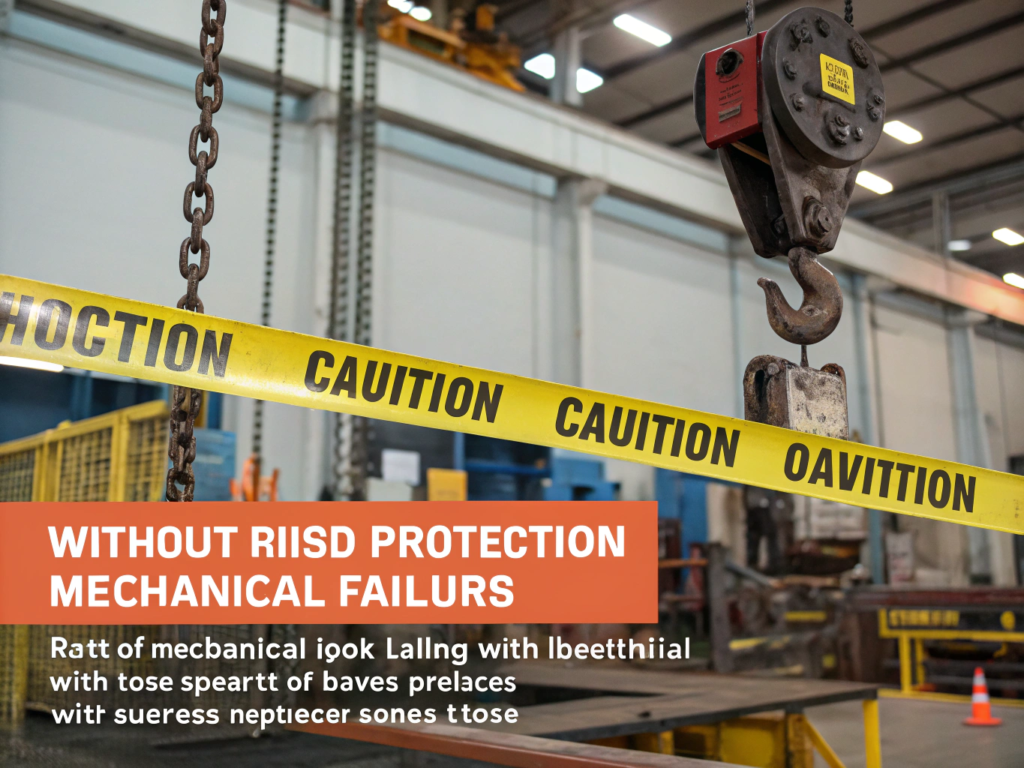
Real-Life Examples of Overloading
I recall a situation where a hoist without overload protection malfunctioned during an important project. The load was too heavy, and the hoist couldn’t handle it. The result was catastrophic—broken equipment, lost time, and a safety violation. That’s a situation I never want to see again.
Potential Consequences
If the hoist malfunctions due to overloading, it could drop a load, injuring workers or damaging property. It could also cause irreparable damage to the hoist, leading to long downtimes and expensive repairs. That’s why it’s critical to ensure your hoist has the proper safety features in place.
How Do Overload Protection Devices Improve Safety in Lifting Operations?
Overload protection devices don’t just protect the hoist—they protect people. I’ve been in situations where I felt confident in the equipment because I knew the hoist had these protection devices in place. It allows the operator to focus on the task without worrying about the risk of overloading.
Overload protection devices automatically stop the hoist when the load exceeds the safe capacity, reducing the risk of accidents and ensuring safe operations.
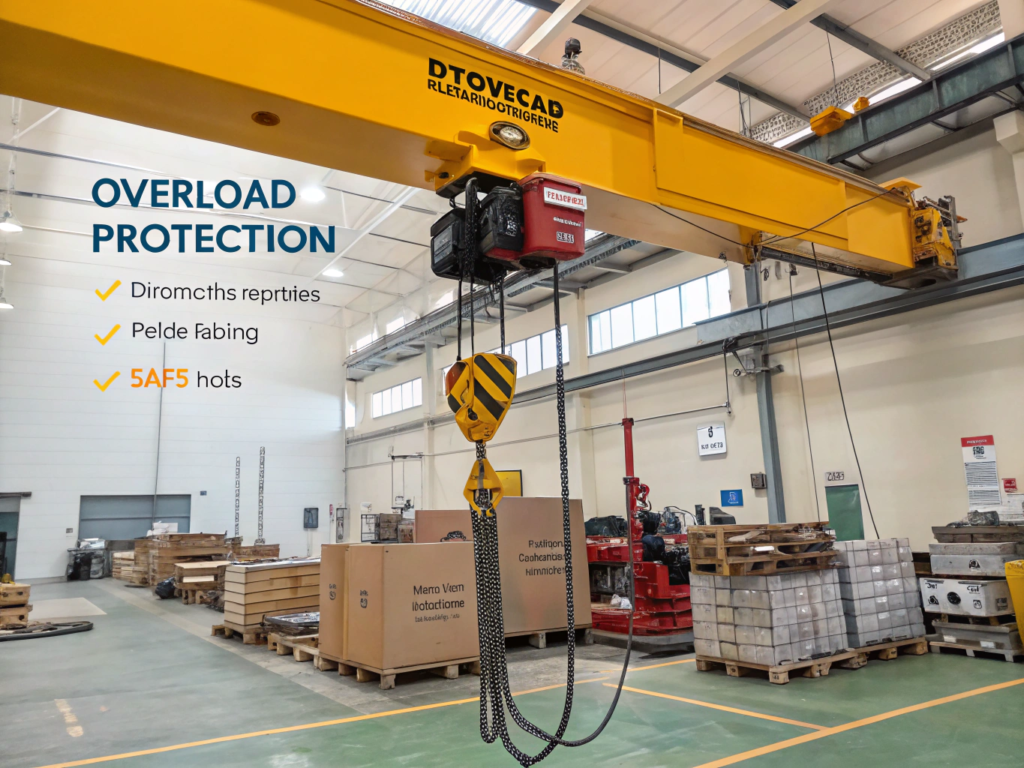
Peace of Mind for Operators
With overload protection, I can rest easy knowing that the hoist won’t be pushed beyond its limits. The system takes care of it for me, so I don’t have to constantly monitor the load. This reduces stress and improves overall safety in the workplace.
Cost Savings from Preventing Damage
By preventing overloads, these systems also help save money. Overloading your hoist can lead to costly repairs, replacements, and downtime. I’ve learned over the years that investing in reliable overload protection is a smart move that pays off in the long run.
Conclusion
Overload protection is crucial for safe hoisting operations. It helps ensure the equipment operates within its safe limits, preventing accidents and equipment damage. Always make sure your hoist has overload protection to guarantee safe and efficient lifting.
